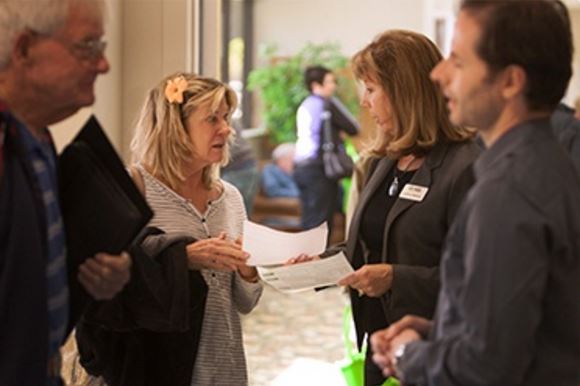New website launched: PERAtour.org
PERA is kicking off a statewide outreach initiative with 12 meetings in nine locations statewide, and a new dedicated website. The purpose of the meetings, and the in-person and online conversations to follow, is to open up a factual conversation about PERA’s financial health and risk profile.
Recent changes to external conditions have increased PERA’s risk level for retirees, members, taxpayers, and communities around Colorado. Risk is related to the plan’s ability to withstand a catastrophic economic event such as the 2008-2009 recession. The risk profile increases along with the plan’s vulnerability to a major economic downturn. To remain sustainable, it is important that PERA remain resilient and able to withstand major ebbs and flows of the market.
Among the factors influencing PERA’s funded status are a population living longer and a financial market yielding lower returns on investments. Between 2000 and 2014, life expectancy of the PERA population increased by around one year to the age of 78. While that may not sound like a big gain, the impact is much greater increases when considered for the entirety of the PERA membership.
While PERA has achieved a 9.5 percent return on investments over a 35-year time period, the last several years have been more challenging. In 2015, (the latest year for which PERA has audited financial returns), PERA earned a 1.5 percent return on investments. Despite the lower absolute number, that return was still above the benchmark for the fund. That said, the next few decades may not yield the same type of returns as experienced in the past, thus the Board has lowered the expected rate of return to account for those expectations.
Since its founding in 1931, PERA has had to adapt as new circumstances and situations emerge. PERA’s prior experience has shown that the time to plan for any changes is before a crisis hits. While PERA is in a very different situation than in 2008, the time to act is now.
PERAtour, a statewide conversation, will visit nine areas of the state and host 12 public meetings with members and stakeholders between now and the end of June, with plans to continue the conversation in the fall. PERA staff will address the current situation and engage participants in discussion about guiding principles and potential changes.
The feedback from these meetings and conversations, as well as ideas from policymakers and other stakeholders, will be consolidated and reviewed by the PERA Board of Trustees to inform any deliberations about changes to the PERA plan design. All members, retirees, taxpayers, and interested citizens are invited to join in this very important conversation.
- Visit peratour.org to follow the tour, explore the issues, and find a community meeting.
- Attend an in-person community meeting—no reservations are needed.
- Get in touch—PERA is here to listen. Email peratour@copera.org, or call the dedicated PERAtour phone number at 720-213-7970.
PERA issues impact not just our members and retirees, but communities across Colorado. Given the significant footprint of PERA, it is important to have a variety of voices involved in a conversation about potential changes to the plan that will ensure PERA can maintain a sustainable retirement for Colorado’s public employees.
BenchmarkA tool used to measure performance. For example, an investor can use a stock index as a benchmark to measure his/her own investment performance compared to the market as a whole.





I attended the PERA Tour meeting in Denver. First I think we are lucky to have Greg Smith as our executive director. He is very knowledgeable and a tireless advocate for PERA with the legislature. The increase in lifespan by one year and the reduction in assumed return from 7.5% to 7.25% has pushed the PERA fund into the yellow warning zone. This is why the PERA tour is being held in various locations. Greg assured us that the fund is sustainable with current assumptions. My opinion is that if the return dropped to 7% the fund is not sustainable. I expect the PERA board in September will make some minor changes that will help.
The following is my opinion only. My message to PERA members is that we will be revisiting this issue and eventually I think it likely that retirees may need to vote on lowering benefits in order to save the core investment fund. In addition to the possibility of lower returns, the 10% AED/SAED contribution (which reduces the unfunded liability) will be under pressure from TABOR restrictions. The ratcheting down of revenue relative to state GDP means state employees do not expand with the economy. Outsourcing of many jobs (such as janitorial services) also will reduce the number of employees particularly in the State Division. As many of you know, being paid prevailing wages and step increases are disappearing. This also impacts the AED/SAED contribution. Please attend a PERA Tour meeting if you can. This is only going to be round one.